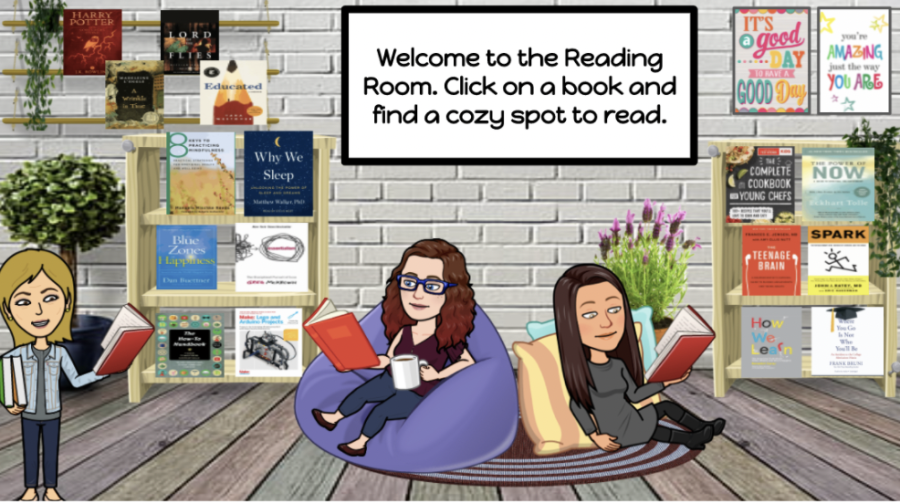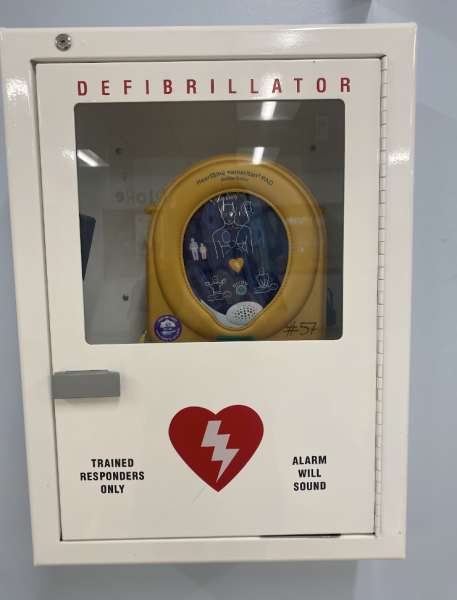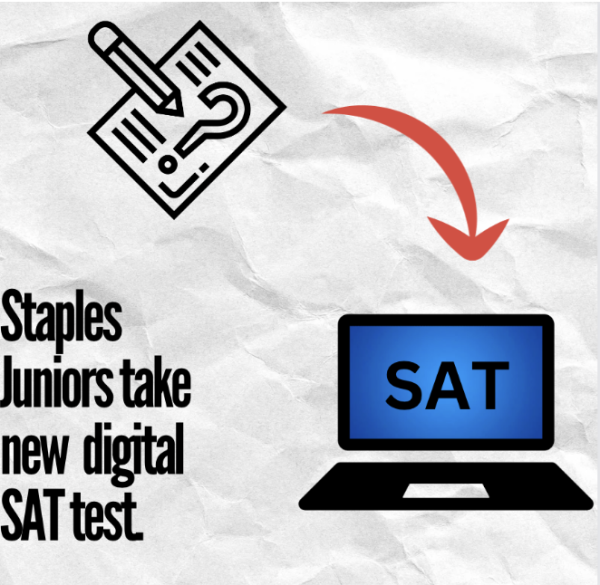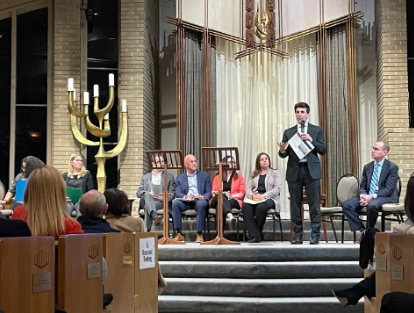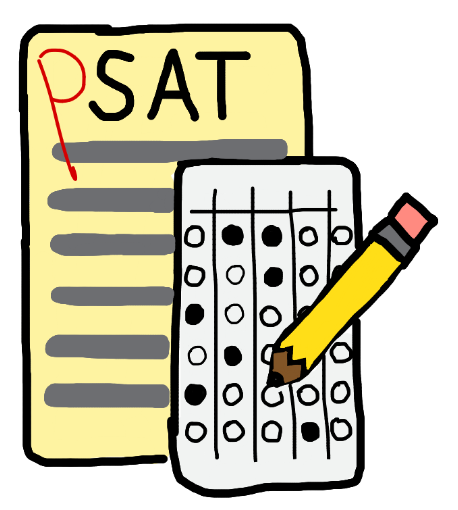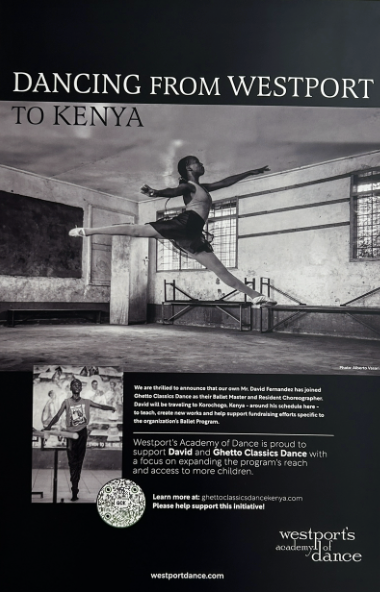Guidance department’s “Virtual Calm Room” takes positive step toward improving mental health
The virtual calm room features four rooms: a relaxation room, a creativity room, a physical wellness room and a reading room. The reading room includes links to books about topics such as the importance of sleep and the inner workings of the teenage brain, as well as pleasure books such as “Harry Potter” and “Lord of the Flies.”
“During the pandemic, a larger than average share of young adults (ages 18-24) report symptoms of anxiety and/or depressive disorder (56%),” KFF, a non-profit health journalism organization, reported.
Among the innumerable consequences that have risen as a result of the pandemic, there has been an increased awareness of mental health issues and how to deal with them. The long, lonely stretch of isolated time in 2020, paired with the instability and unpredictability of the future, took a toll on mental wellness globally.
Although the necessity for social distancing has been reduced and a wave of familiarity washes over Staples with the lifting of the mask mandate on Feb. 28, the increased focus on mental health awareness remains prominent. In fact, the guidance department, specifically counselors Sarah Magilnick and Cristina Banks, recently released their “Virtual Calm Room:” a resource filled with activities including a virtual coloring book, a virtual touch piano, links to different workouts and meditation videos on YouTube. I think guidance is genuinely trying to provide mental health resources to the students although it’s difficult [to do so virtually] — Akira Maidique ’22
“This process took months of gathering materials, creating our vision and ideas for each room,” Magilnick said. “It took almost a full school year to finalize it and we took some time to update it this year to ensure links were still active and are working to ensure the bitmojis are updated with our current counselors.”
While guidance counselors are always available to converse with students and offer human resources, the calm room serves as a more personal and interactive approach to promoting self-care. The “room” features four interactive pages: a relaxation one with links to an online puzzle and a virtual fireplace (among other things), a reading room with links to various books about mental wellness, a creative room with links to various drawing and coloring websites and a physical wellness rooms with links to workout and yoga videos.
“I think the goal really is to have a resource available community-wide for all to access and to implement lessons around the calm room to ensure students know what resources they have in and out of school,” Magilnick said. “We want our students to have valuable resources to navigate some strong emotions.”
The room was first introduced in connections classes and has received positive feedback from teachers and students alike since its debut.
“I think the calm room was a good idea.” Akira Maidique ’22 said. “It definitely was cool to play with and was a fun experience to look through with my friends. I think guidance is genuinely trying to provide mental health resources to the students although it’s difficult [to do so virtually].”
The room was inspired by Curtis Darragh, a counselor in the Danbury Public Schools who was named Connecticut School Counselor of the year.
“I saw the impact his calm room had with his middle school students and I wanted to work towards having a similar impact here with our students,” Magilnick said. “It gave an opportunity for students to access skills from anywhere they are, in school, at home, on vacation, during classroom lessons around mindfulness or self-care; it provided access to anyone and everyone.”
Although the classroom already seems to tailor to a wide variety of interests and has been received positively by the student body, the counselors in charge of the project remain open to constructive criticism of any kind in order to expand the audience it panders to.
“All of the feedback I have received has been positive so far,” Magilnick said. “We are always open to any additional feedback or suggestions […] it is a living document and we hope to continue to update it as the years go on.”











































